Mars Plumes: Why The Low Resolution?
Why are these "clouds" being viewed from Earth by telescope, instead of from mars, by the MGO? This was one of the more pointed questions we received when our first exploration of the "Mars plume" was released earlier this week. We decided to take a closer look at this seemingly obvious situation – why look at the planet from afar when we could be so much closer? Aren't there pieces of equipment on and around the planet that could have taken better photographs of this planetary phenomenon?
First – the MGO, also known as the Mars Global Orbiter, best known as the Mars Global Surveyor. This floating observer of the plant would be a great instrument to use to take photos of Mars – if it were still in commission. Unfortunately the MGO (or MGS) has not been in contact with any services on Earth since the year 2007.
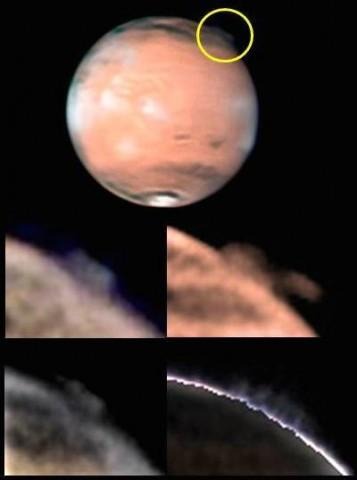
Above – from the source – this is as close we we're gonna get.
Barring the fact that it takes days, in some cases, to align instruments to take photos of any part of the planet, could another craft have taken the shot?
What other pieces of equipment are up there, floating around Mars, just waiting to capture historic happenings?
MAVEN
The Mars Atmosphere and Volatile EvolutioN Mission (MAVEN) is up there, watching Mars, hoping to find out why Martian atmosphere and water disappeared so many thousands of years ago.
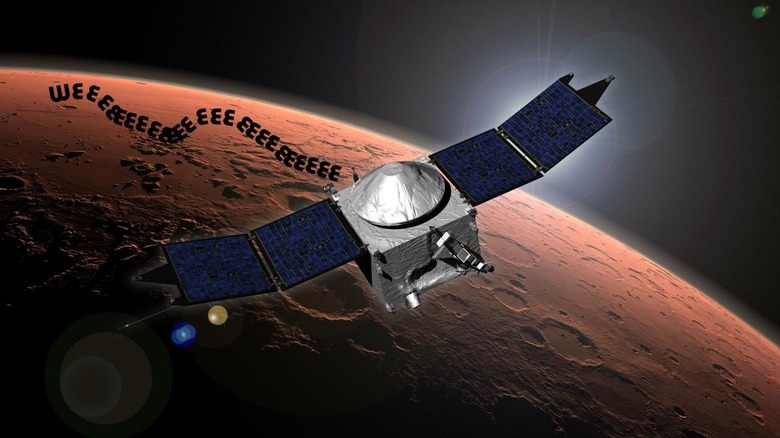
Unfortunately MAVEN was launched in November of 2013 while the findings (which occurred over the space of 10 days) were captured in the year 2012.
This is what happens with scientific research papers – sometimes the actual study is conducted many years previous to the release of the paper – news of a finding like this can appear YEARS after the initial event.
Mars Reconnaissance Orbiter (MRO)
This craft was one of five active spacecraft exploring the planet when launched back in 2005.
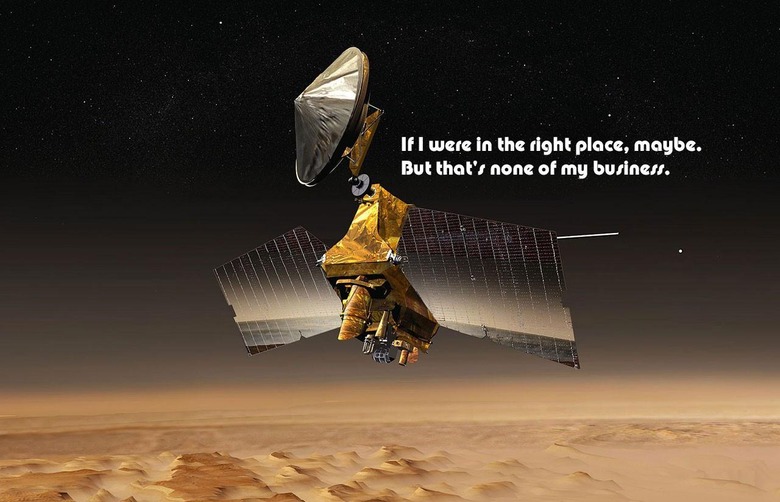
This craft was simply not in the right place at the right time at the time of the plume in 2012.
Mars Express
In February of 2012, the craft had just resumed full science operations. The October before, this craft had been ailed with a solid-state mass memory problem (for the 3rd time that year).

While there weren't any significant events between February and July of this year for the craft, the amount of time and effort involved in aligning the craft to capture the events of the plume would have been far too great.
2001 Mars Odyssey
In 2012, the THEMIS instrument on the "2001 Mars Odyssey" craft was being used to help select a landing site for the Mars Science Laboratory (MSL).
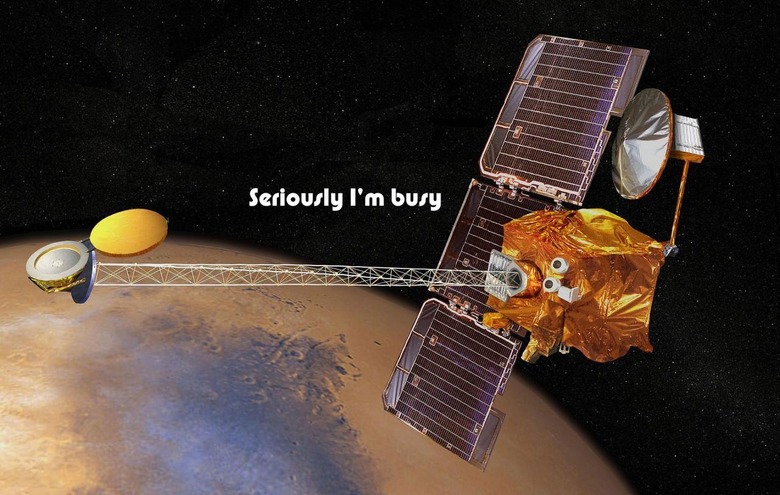
This craft simply did not have time to be turning around taking photos on the other side of the planet.
Mars Orbiter Mission (Mangalyaan)
The Mars Orbiter Mission launched the Mangalyaan craft into space in November of 2013.
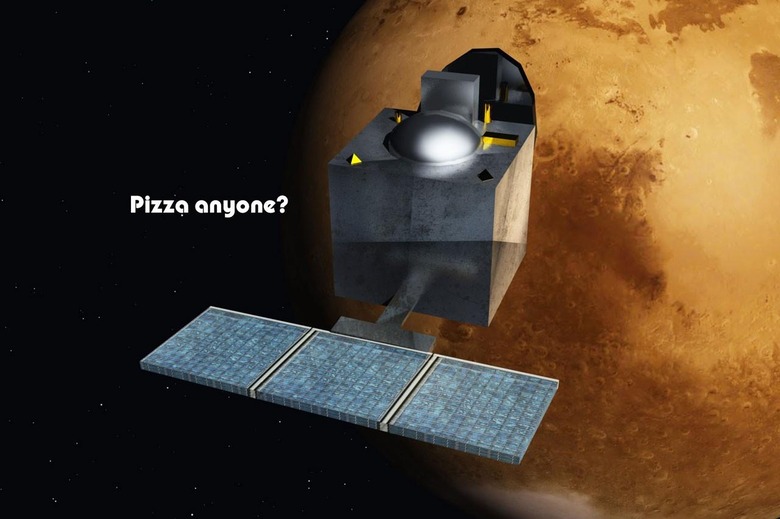
It's been in orbit around Mars since September of 2014 – and therefore wasn't even close to Mars back when this set of plumes was observed.
Everything else
There are craft on the planet, and there have been other missions with craft launched at, around, and right by Mars over the past 50 years. You can see a full list of Missions to mars on Wikipedia if you do so dare.
But the bottom line is this: there's only one way any craft would have been able to capture the plume. They'd have had to have been pointing their camera at the exact spot where the plume happened, and they would have had to have magical intuition to have been pointed in that direction, with their camera fired up, capturing it as it happened in real time.
It's not like we can just call upon tiny robot helicopters to just fly over there and take shots whenever we want.
That's just crazy!
